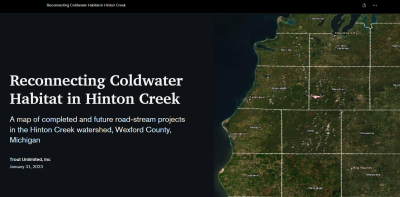Undersized and poorly aligned culverts block fish passage and contribute harmful sediment into streams and rivers. Even within the relatively pristine forested watersheds of the Huron-Manistee National Forests, an estimated 1,000 undersized road-stream crossings impair rivers and streams that are beloved by trout anglers and canoeists and provide climate refugia for brook trout, a cold-water dependent native fish.
Replacing undersized culverts with larger “stream simulation” culverts and bridges to restore fish passage and natural stream flows is an aquatic habitat management priority for the Forest Service. Restoration projects across the Huron-Manistee National Forests require a collaborative approach due to mixed land ownership. A great example of a successful partnership is found in Cadillac, Michigan, where Trout Unlimited, Wexford County Road Commission, the Forest Service and other partners are tackling watershed-scale restoration, culvert by culvert, stream by stream.
This partnership has completed 11 aquatic organism passage restoration projects within the Hinton Creek watershed, a “priority watershed” for the Forest Service that also encompasses nearby Cedar Creek and Arquilla Creek. A 12th and final project in this watershed is scheduled for completion this year, which will completely reconnect the mainstem of Hinton Creek with its fish-bearing tributaries, improving the resiliency of the wild brook trout population and other native species. Funding from the GLRI helped make this work possible.
Read the full story or check out this story map to learn more.


